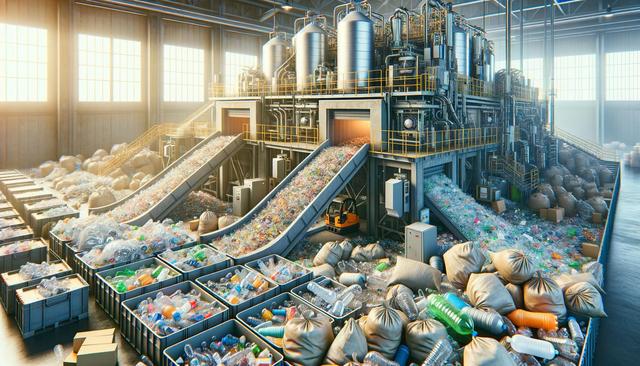Understanding the Basics of Plastic Recycling
Plastic recycling is more than just tossing containers into a bin. It starts with understanding the different types of plastics and how they are processed. Most plastic items are marked with a resin identification code (numbers 1 through 7) that helps determine how the item should be recycled. These codes represent the type of plastic material used and not all are recyclable in every area. For example, plastics labeled with numbers 1 (PET) and 2 (HDPE) are widely accepted in curbside programs, while other types like number 6 (PS) are often not recyclable through local collection.
Knowing which plastics can be recycled in your area is essential. It’s a good idea to check with your local recycling facility or municipality for guidelines. In general, items such as water bottles, milk jugs, and detergent containers are commonly accepted, while plastic bags, straws, and foam containers often require special drop-off points.
Preparing Plastics for Recycling
Preparing your plastics before placing them in the recycling bin ensures they can be processed efficiently. Contaminants such as food residue or non-recyclable materials can prevent entire batches from being recycled. To avoid this, follow a few simple steps:
- Rinse containers thoroughly to remove any leftover food or liquids.
- Remove caps and lids unless otherwise instructed by your recycling provider.
- Flatten bottles and containers if possible to save space.
- Remove any labels or stickers when feasible.
By taking the time to prepare your recyclables properly, you’re helping to reduce contamination rates and increase the likelihood that these materials are turned into usable products.
What Not to Recycle
Understanding what not to recycle is just as crucial as knowing what can go into the bin. Many items that appear to be plastic are either not recyclable or require special handling. These include:
- Plastic bags and film—often recyclable at grocery store collection points but not in curbside bins.
- Styrofoam or polystyrene products—rarely accepted due to the difficulty in processing.
- Plastic utensils and straws—typically made from plastics not accepted in standard recycling programs.
- Containers that previously held hazardous materials—these are considered contaminated.
These materials can damage equipment or contaminate otherwise recyclable loads. When in doubt, it’s better to check locally or avoid including questionable items altogether.
Creative Ways to Reduce Plastic Waste
While recycling is important, reducing the amount of plastic you use in the first place is even more effective. There are several ways you can cut down on plastic waste in your daily life:
- Use reusable shopping bags, water bottles, and food containers.
- Buy in bulk to avoid individually wrapped items.
- Choose products with minimal or recyclable packaging.
- Support brands that use recycled or biodegradable materials.
In addition to reducing usage, consider reusing plastic containers for organizing household items, storing leftovers, or even crafting projects. These small habits can contribute to long-term environmental benefits and reduce the strain on recycling systems.
Staying Informed and Involved
Plastic recycling efforts are evolving, and staying informed is key to participating effectively. New technologies, changes in local policies, and global shifts in how plastic waste is handled all impact how individuals should recycle. Follow local municipality updates, attend community recycling events, and share your knowledge with others to encourage responsible habits.
Joining local environmental groups or participating in clean-up initiatives can also amplify your impact. Educating children and family members about proper recycling practices helps build a culture of sustainability at home.
Recycling isn’t just about following rules—it’s about making thoughtful choices, staying engaged, and recognizing the role each person plays in protecting the environment.
Conclusion: Making Plastic Recycling a Daily Habit
Plastic recycling at home is both accessible and impactful when done correctly. By understanding the types of plastics, preparing materials properly, avoiding non-recyclables, and reducing overall use, households can contribute meaningfully to environmental conservation. These efforts not only keep plastics out of landfills and oceans but also promote a more sustainable lifestyle. Making recycling a consistent practice starts with small, informed decisions that add up over time. Staying proactive and educated empowers individuals and communities to make a positive difference for the planet.




Leave a Reply